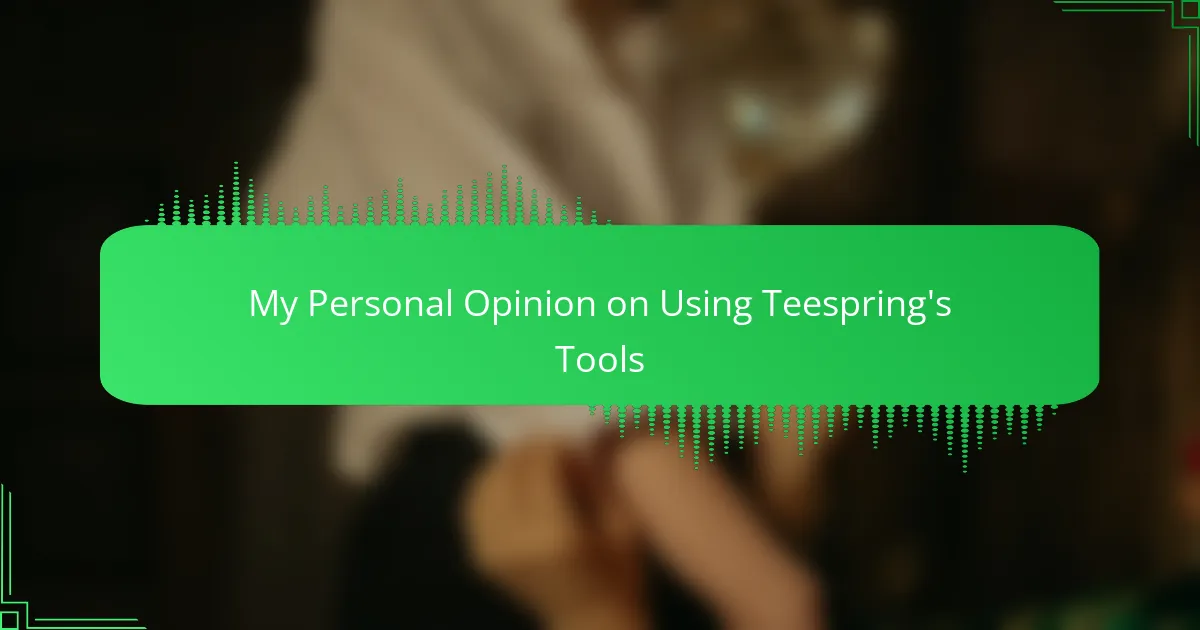Key takeaways
- Teespring offers accessible design tools and integrated marketing options, simplifying the process for creators.
- Understanding your audience and focusing on design basics, such as color choice and placement, enhances the appeal of t-shirt designs.
- Utilizing Teespring’s analytics and promotional features can transform casual projects into more strategic business endeavors.
- Regularly analyzing sales data and gathering feedback on designs helps in making informed decisions and improving overall performance.
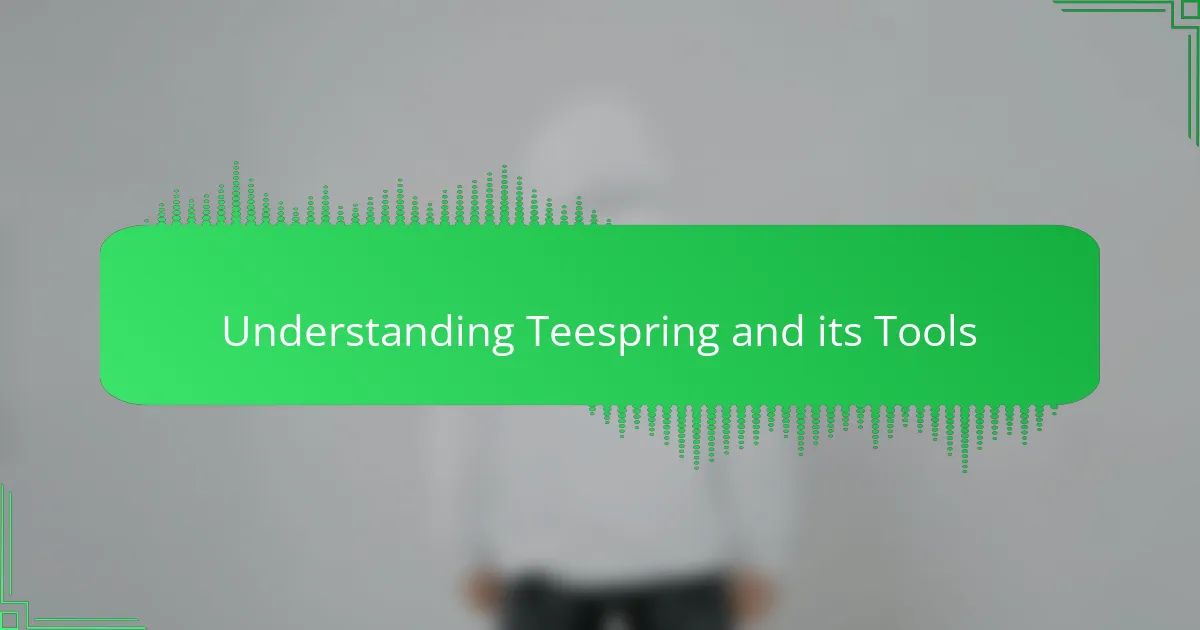
Understanding Teespring and its Tools
Teespring, from my experience, is more than just a platform to sell t-shirts—it’s a comprehensive toolkit designed for creators like us. Have you ever wondered how some sellers manage to streamline their design and sales process so effortlessly? I found that Teespring’s design interface and integrated marketing options truly simplify what initially seemed complex.
What struck me the most about Teespring’s tools is how accessible they are, even if you’re not a tech expert. For instance, their mockup generator allowed me to visualize my ideas quickly, which boosted my confidence to experiment with various designs. Don’t you think having such instant feedback is invaluable when you’re trying to put your creativity out there?
Furthermore, Teespring offers analytics and promotional features that I believe many overlook. These elements provide insights beyond just sales numbers—they help you understand customer behavior and optimize your outreach. From my own journey, using these features transformed a casual hobby into a more strategic and rewarding endeavor.
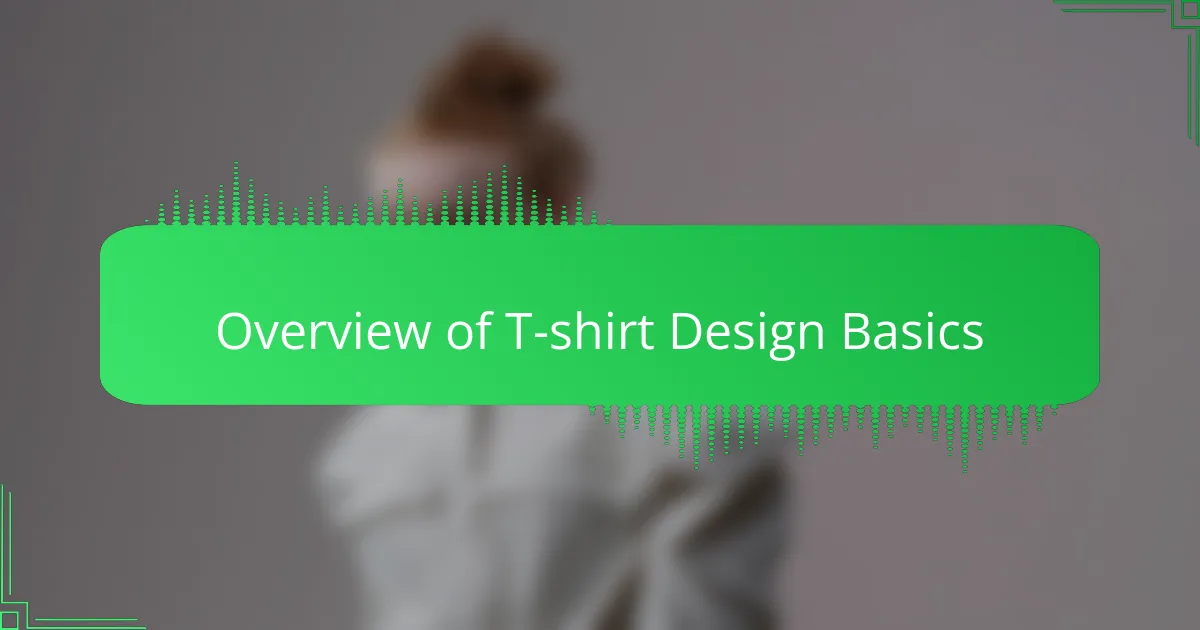
Overview of T-shirt Design Basics
When it comes to t-shirt design basics, I always start with simplicity. Choosing the right colors and fonts can make or break a design. Have you noticed how a clean, bold font often grabs attention better than something overly fancy? From my experience, sticking to a limited color palette helps keep the design visually appealing without overwhelming the eyes.
Another aspect I find crucial is understanding the placement of your design on the t-shirt. I learned early on that centers and upper chest areas tend to work best, especially when your design has meaningful text or graphics. It makes me wonder—how often do we underestimate the power of just where the design sits on the fabric?
Finally, I believe knowing your audience plays a big role in design choices. When I’m designing, I ask myself: who will wear this? Is it casual wear enthusiasts, sports fans, or niche communities? Answering these questions steers the style, tone, and imagery I choose, making the final product resonate more deeply with people.
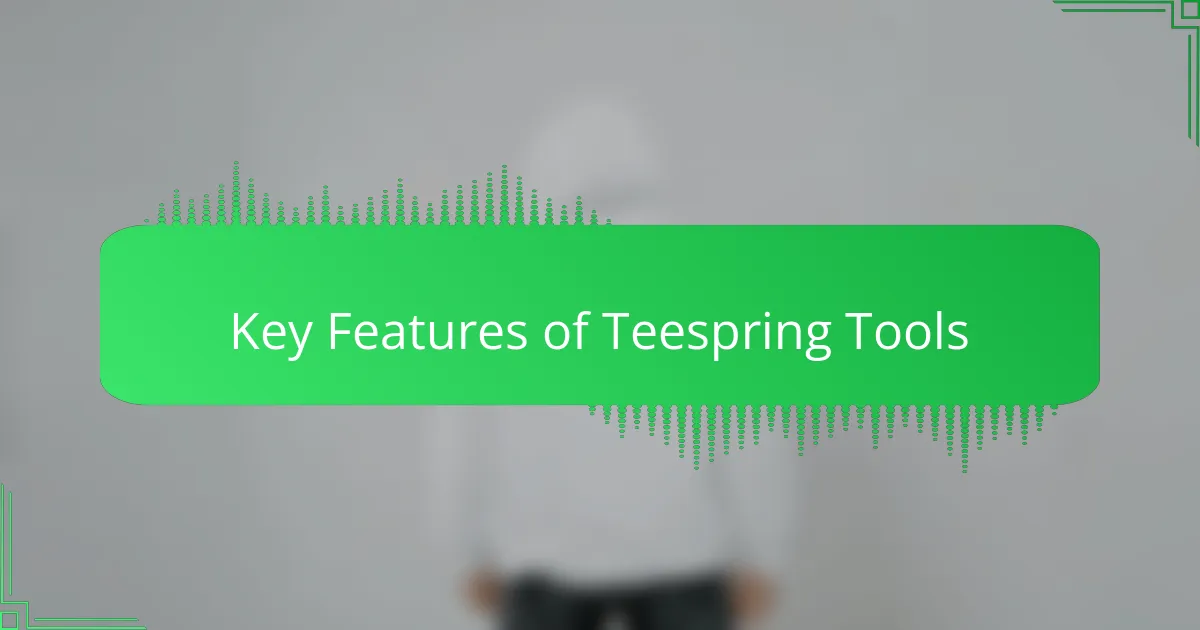
Key Features of Teespring Tools
One of the features I found most helpful in Teespring’s tools is the drag-and-drop design interface. It’s really intuitive, and I remember feeling relieved because I didn’t have to wrestle with complicated software. Have you ever tried designing on platforms that make you second-guess every move? This ease of use made me focus more on creativity than on learning the tool itself.
Another feature that caught my attention is the real-time mockup generator. Seeing my design instantly on various t-shirt styles gave me a clearer idea of how the final product would look. This visual confirmation helped me avoid costly mistakes and gave me the confidence to try bolder ideas, something I didn’t expect when starting out.
Lastly, the integrated promotional tools and detailed sales analytics felt like having a mini marketing team at my fingertips. I ask myself, how often do we miss sales opportunities simply because we don’t have the right data? With Teespring, understanding customer preferences and tweaking campaigns became much easier, turning my casual projects into something more strategic and rewarding.
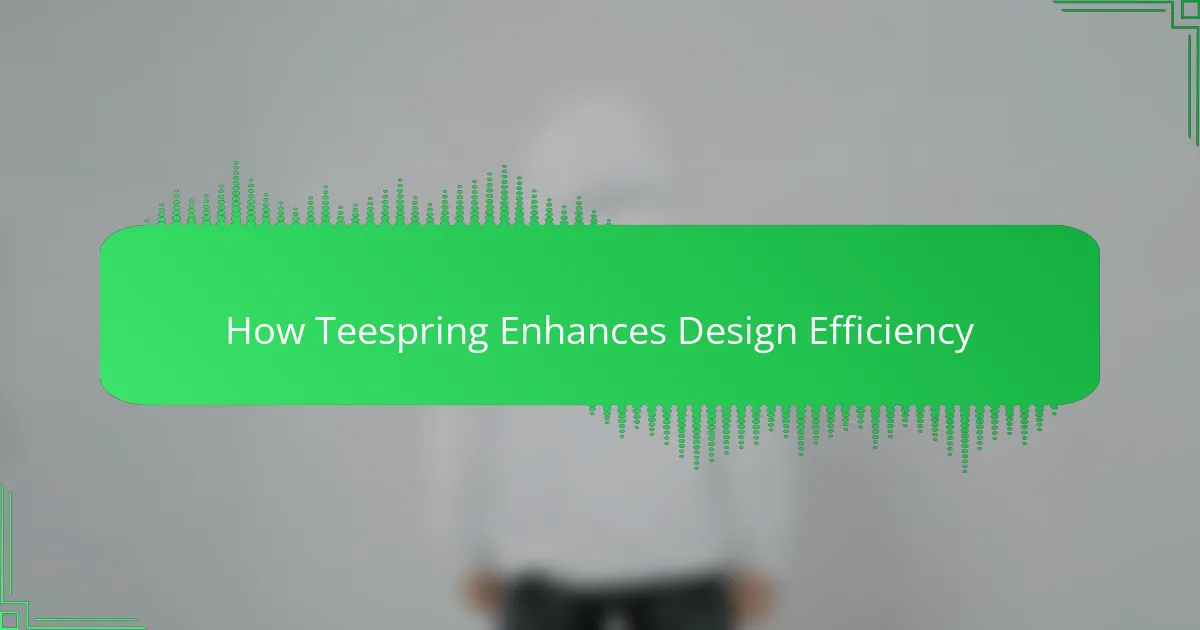
How Teespring Enhances Design Efficiency
What really speeds up my workflow with Teespring is how seamlessly it ties design and production together. I no longer need to juggle multiple platforms or worry about file formats—this streamlining keeps me in the creative zone longer. Have you ever felt frustrated switching between tools, breaking your focus? Teespring just cuts through that hassle.
The platform’s ready-made templates also save me a surprising amount of time. Instead of starting from a blank slate, I can tweak a design to fit my style, which frees me to focus on adding unique touches. It’s like having a trusted sketchbook that inspires me rather than intimidating me.
Plus, I appreciate how quickly feedback loops happen thanks to the instant visual previews. When I see a design live on different products in real time, I can make smarter, faster choices. I often wonder how much smoother my creative process would be without that immediate confirmation—and with Teespring, I don’t have to imagine it.
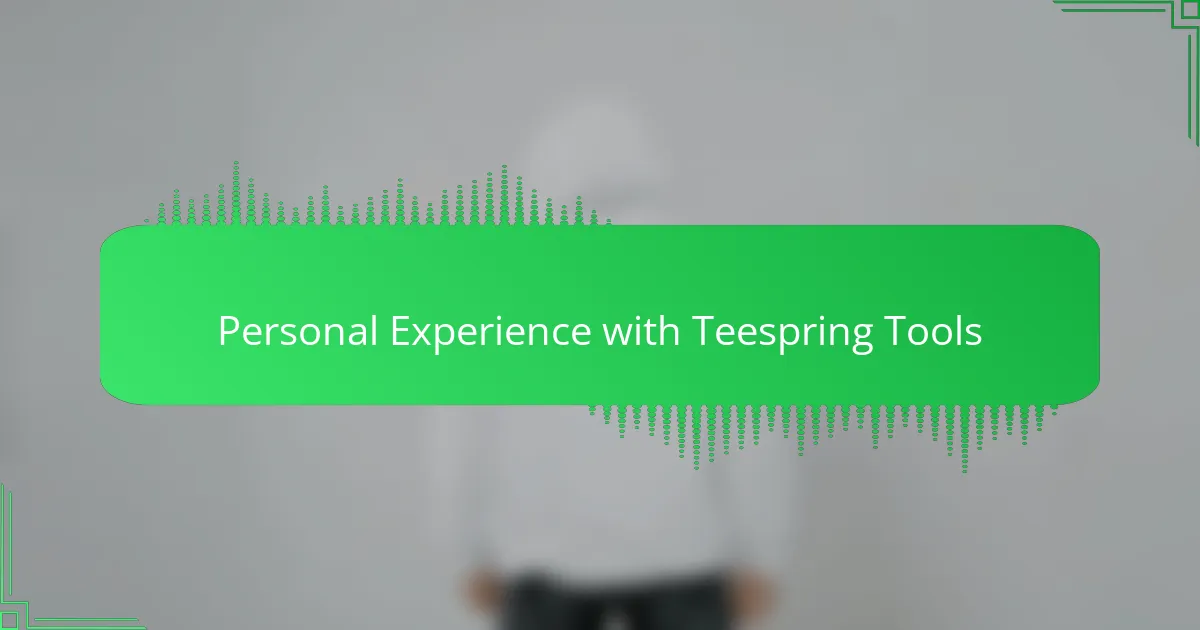
Personal Experience with Teespring Tools
Using Teespring’s tools felt surprisingly natural from the start. I recall the first time I uploaded a design and instantly saw it on a shirt mockup—it was like seeing my idea come to life in a way I hadn’t expected. Have you ever experienced that moment when your vision suddenly feels tangible? That’s exactly how it felt for me, and it made the whole process exciting rather than intimidating.
There were moments when I questioned if the tools would limit my creativity, but I quickly realized they actually expanded it. For instance, experimenting with their font options and color palettes gave me new ideas I wouldn’t have considered otherwise. It made me think: isn’t it amazing how the right tools can spark creativity instead of stifling it?
However, I did find myself wishing for a little more customization in some areas, like layering designs or adjusting finer details. Still, knowing that the platform keeps evolving gives me confidence that these gaps will close over time. Wouldn’t you agree that having room to grow with a tool is just as important as its current features?
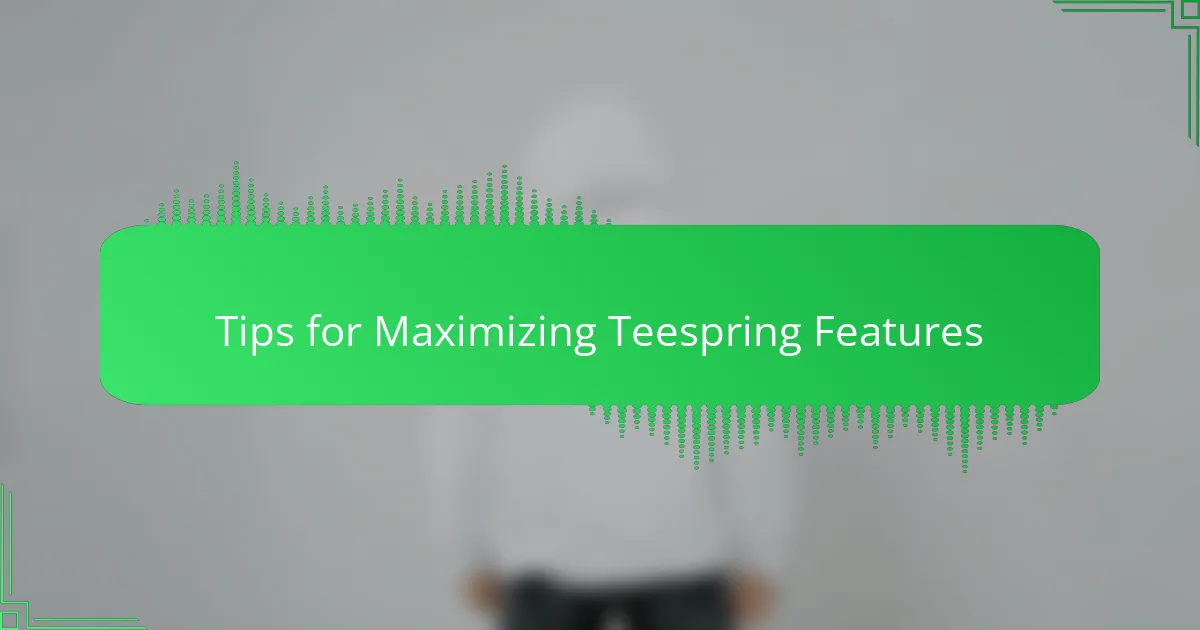
Tips for Maximizing Teespring Features
One tip I’ve found invaluable is leveraging Teespring’s promotional tools early on. At first, I underestimated how much those built-in marketing features could boost visibility. Have you ever launched a design that you loved but struggled to get noticed? Using targeted promotions and the platform’s audience insights turned that frustration around for me quickly.
Another strategy that changed how I work is carefully analyzing the sales data Teespring provides. It’s easy to get caught up in just making designs, but I learned that checking which products and colors perform best guides smarter choices. In my experience, this data-driven approach helped me avoid wasting effort on designs that didn’t connect.
Finally, don’t overlook the power of the mockup generator beyond just visualization. I sometimes create multiple mockups showing different angles or styles to test what resonates most with potential buyers. Asking myself, “What would grab my attention if I stumbled on this design?” has made a huge difference in how I present my work.
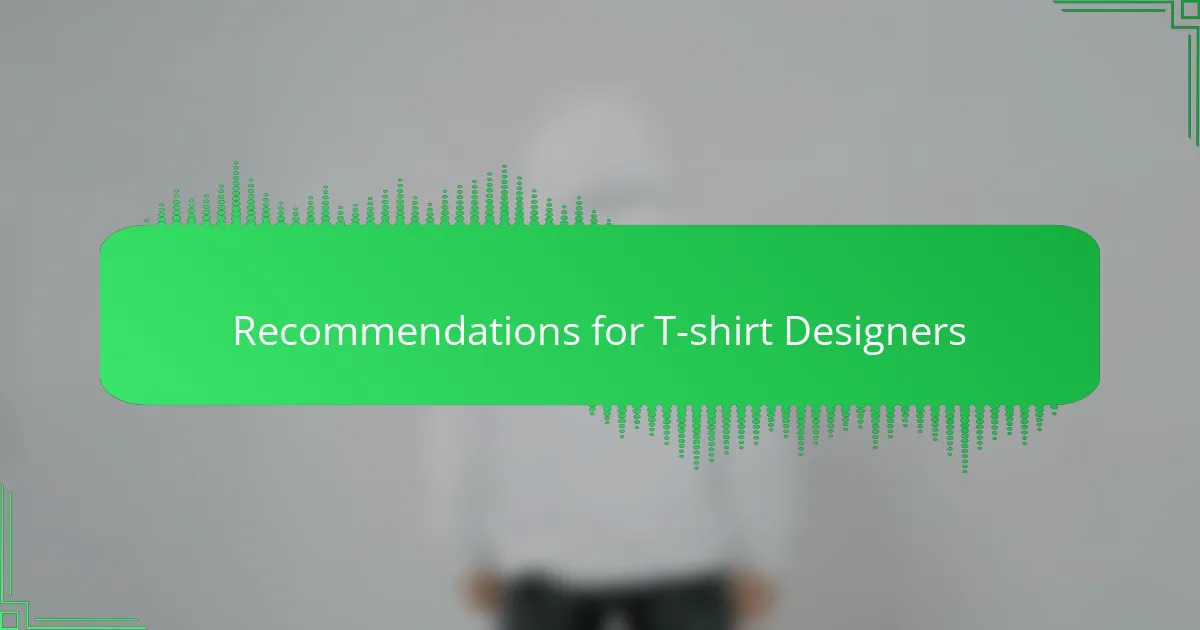
Recommendations for T-shirt Designers
When I first started designing t-shirts, I quickly realized how crucial it is to keep your concepts clear and focused. Do you ever find yourself overwhelmed by too many ideas at once? I learned that narrowing down your theme before diving into design not only saves time but also strengthens the message your shirt conveys.
Another recommendation I can’t stress enough is to make use of Teespring’s built-in tools for testing your designs. For example, I often create several mockups and ask friends or followers for feedback before deciding which style to launch. This step helped me avoid costly mistakes and made me feel more confident about what truly connects with people.
Lastly, I encourage designers to regularly revisit their analytics and adjust accordingly. It might sound tedious, but from my experience, understanding which designs resonate—and which flop—can transform casual projects into a sustainable creative business. Have you checked your sales trends lately? That insight can be a game changer.
